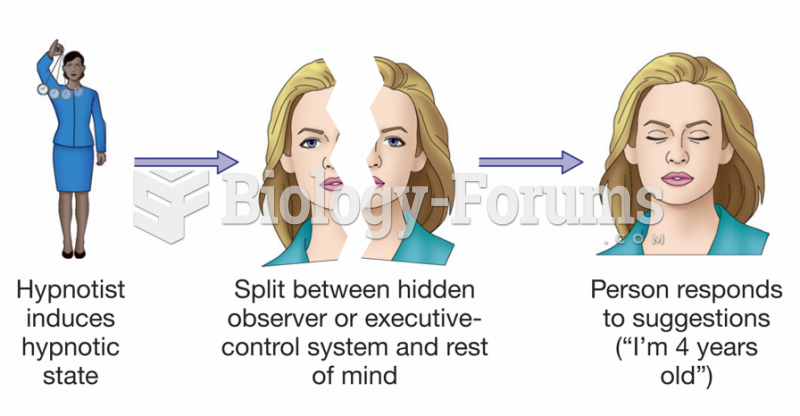Answer to Question 1
The various theories of crime causation identify some of the reasons why crime occurs, especially why crime rates are higher within some groups than within others. Most theories are not very useful in identifying the causes for specific crimes. Also, they are not very useful in explaining why one individual commits forgery, another commits rape, and yet another burglarizes someone. Without knowing why a crime occurs, it is extremely difficult to develop an effective rehabilitation approach to curb repeat offenders. Theories that attempt to explain all types of crime have a built-in limitation. Crime is a comprehensive label covering a wide range of offenses, including purse snatching, auto theft, rape, check forgery, prostitution, drunkenness, possession of narcotics, and sexual exhibition. Obviously, because the natures of these crimes vary widely, the motives or causes underlying each must vary widely. Therefore, it is unlikely that any theory can adequately explain the causes of all crimes. It may be more productive to focus on developing more limited theories that attempt to identify the causes of specific offenses (for example, drunkenness, incest, auto theft, rape, or fraud) rather than to develop additional comprehensive theories.
Answer to Question 2
Psychoanalytic Theory: Psychoanalytic theory is not a single coherent theory but a variety of hypotheses developed by psychoanalysts since the turn of the 20th century from the pioneering work of Sigmund Freud. Generally, these theories postulated that delinquent behavior results when the restraining forces in the superego (one's conscience and self-ideal) and the ego (mediator among the superego, the id, and reality) are too weak to curb the instinctual, antisocial pressures from the id (source of psychic energy). Human nature was seen as largely determined by id instincts, which were basically antisocial and immoral in character. This theory postulated that current behavior was largely controlled by early childhood experiences. Deviant behavior was viewed as stemming from unconscious conflicts, fixations, and repressed traumatic experiences. The psychiatric school, of which psychoanalysis is a large component, has had a significant influence on corrections because it asserts that some offenders commit illegal acts because they are insane. Criminal justice systems frequently call on psychiatrists to determine the sanity of accused offenders. If someone is judged by the court to be innocent by reason of insanity, he or she is sent to a mental hospital, instead of to a jail, to recuperate. Psychiatry has also classified individuals into numerous categories in terms of their mental functioning. One category, sociopath, has had considerable relevancy for corrections. A sociopath is a person who is thought to have no moral constraints against engaging in criminal activity, doing so whenever it is personally advantageous, even though others may be hurt. Since 1950 Thomas Szasz and others have seriously questioned the medical-model approach to emotional problems and have asserted that mental illness is a myth. Szasz believes that people have emotional problems, but not a disease of the mind, as implied by the medical model. Courts, however, continue to use the mental-illness model. Psychoanalytic theory is increasingly falling into disfavor. One reason is the finding that people with emotional problems who undergo psychoanalysis are no more likely to improve than a comparable group who receives no therapy.
Psychodynamic Problem-Solving Theory: Psychodynamic problem-solving theory views deviant behavior as contrived by the personality as a way of dealing with some adjustment problem. The problem is generally perceived as a conflict among various ingredients of the personality: wishes, drives, fears, strivings, loyalties, codes of ethics, and so on. Situational factors are generally deemphasized. A serious shortcoming of the theory is that it is often extremely difficult (if not impossible) to determine precisely which wishes, drives, fears, or ethics motivated someone to commit a crime. For example, the following internal desires have all been advanced as motivations for committing rape: unfulfilled sexual desires, a desire for violence, and feelings of inferiority. All are theorized to be temporarily alleviated during rape as the offender feels a sense of power and superiority. When a sexual assault occurs, it is nearly impossible to determine the extent to which each of these internal desires contributed to the assault. Frequently, when using this theory, only speculations can be made about why a crime occurred, as few tools exist to check the accuracy of the speculations.
Frustration-Aggression Theory: Frustration-aggression theory asserts that frustration often provokes an aggressive response. Thus, violence is seen as a way to release the tension produced by a frustrating situation. An unemployed husband, unable to pay the bills or find a job, for example, may beat his wife. Some authorities viewed the burning and rioting in our inner cities in the 1960s as a reaction by African Americans to the frustration of living in a society that promises equality but does not provide it. Frustration-aggression theory provides an explanation for only violent crimes. It does not attempt to explain other kinds of criminal behavior, such as prostitution, fraud, and forgery.
Self-Talk Theory: Self-talk theory is a psychological approach for identifying the underlying motives for committing a crime. According to this theory, the reasons for any criminal act can be determined by examining what the offender was thinking prior to and during the time the crime was committed. A shortcoming of the theory is that, when offenders discuss what they were thinking during a crime, they often seek to slant what they reveal in a socially acceptable way.






